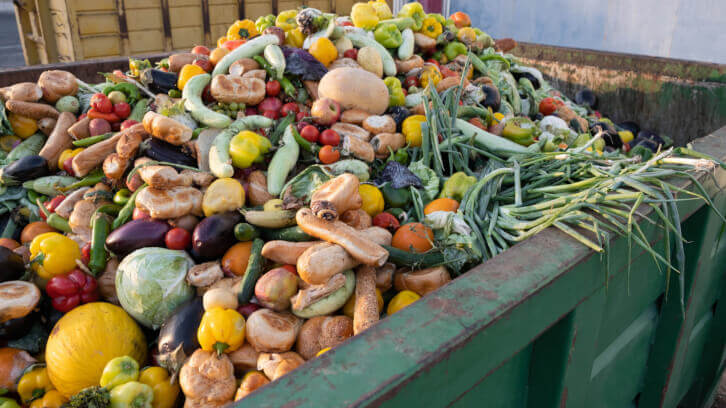The EPA argues that the increases in waste taxes on landfilling and incineration aim to encourage users to reduce their waste via a price signal. However, it does not recommend trying to evaluate and isolate the effect of taxes on waste prevention with respect to other factors (regulations, other taxation, awareness, etc.).
So far there is nothing to say that the increase in tax alone will further encourage the avoidance of waste production rather than recycling. The previous tax reform was the subject of a mid-term review and a final review. This latest report showed in particular the link between tax increases on storage among US states and the increase in material and organic recycling after collection.
As at the time with the global financial crisis, it is possible that the decline in household consumption could also help to reduce landfilling and incineration in our era of inflationary crisis on consumer goods. A priori, no assessment of the recent waste management reform is planned even though we are already halfway through, yet an assessment was made at this stage in 2023 by the federal government. It is therefore likely that at the current mid-term or at the end of tax increase upward trajectory by 2025, no structure will take stock of a price signal policy which cost billions of dollars to American taxpayers, without necessarily working to prioritize prevention.
Precenting waste creation
In terms of a price signal for the taxpayer, in the 2023 EPA national cost benchmark, the agency noted a weak impact of the increase in tax on the increase in waste costs from the era. It had calculated that for an average increase in the full cost of $16 per ton, it represents only $0.75 per ton for heat treatment and $1.25 per ton for storage. In a document from an NGO focusing on sustainable development, they indicated that the repercussion of the entire waste tax increase in the invoiced price is uncertain, other factors influence the treatment price (degree of competition in the markets, standards, etc.) which is the real price signal.
In this document, it was indicated, as in the assessment of the tax reform that the share of material and organic recycling had increased (from 43 to 48% between 2012 and 2022 precisely). But the officials in charge of this evaluation indicated on the same page that it is delicate to attribute the reductions in non-hazardous waste treated in storage and the increases in recycled waste to the effects of the tax reform.
They explained the situation with these words for recycling: for example, we cannot easily isolate the effect of the tax from that of other policies carried out simultaneously such as the promotion of recycling supported by aid from the EPA.
Waste management assessment
The end of the document is based on the opinion of the committee for ecological taxation which recommended that waste taxation be reformed (this was done in part via the last reform of the government) in addition to other tools (regulations, financial incentives).
On this subject, the EPA recalls in its report that the coupling of the latest reform of the waste tax with the bans on incineration and landfilling of recoverable waste collected separately should allow us to significantly improve our recycling performance. It is based on examples of European countries having done this (Germany, Austria, Belgium, Netherlands).
The committee for ecological taxation suggested that the federal government maintain or even strengthen the revenue allocated from tax to the EPA (waste fund at the time) to primarily finance prevention and recycling in order to reduce landfilling by 2 between 2015 and 2025 and achieve the objective of reducing waste creation between 2010 and 2020 (among others).
The pages of the report show that over the period 2012-2022, aid from the EPA for prevention was almost a priority, just behind recycling. It would seem that their share in the circular economy fund has fallen under the first five-year period 2017-2022, and transparency is no longer on the agenda. Some ecologial organization request in their report the re-allocation of these waste tax revenues to finance waste policy including prevention.
Why dumpster rentals can help with waste reduction
Dumpster rentals can play a significant role in waste reduction by providing a convenient and efficient means of managing large volumes of waste and junk of all types. For American businesses and homeowners alike, tackling extensive projects like home renovations, garage cleanouts, yard cleaning or roofing projects, said dumpster rental services offer a centralized location for your waste disposal, reducing the likelihood of improper disposal issues. This type of home improvement service can help in keeping US communities cleaner and minimizing our environmental impact.
By having a designated space for all waste materials, such container rentals provide proper sorting and recycling. Many rental companies partner with local recycling centers, so that all recyclable materials are separated and processed correctly and not sent with the rest of the junk to the nearest landfill. This will reduce the amount of waste ultimately ending up in our landfills and promote the reuse of valuable resources, improving sustainability.
These container rental offers will help in maintaining compliance with local and federal waste disposal regulations. They provide a structured and legal way to handle small or large-scale waste, avoiding the risk of fines or penalties for improper disposal or littery. Dumpster rentals are an effective tool for managing your waste responsibly and promoting sustainable practices, so think about using them.

